Collaboration Journal
Special Feature
A Planetary Initiation
SEAN KELLY
THE COLLABORATION JOURNAL SPECIAL FEATURES series highlights notable articles from Collaboration journal and makes them available to readers without a subscription. This article appeared in Collaboration, Vol. 48, No. 2, Summer 2023.
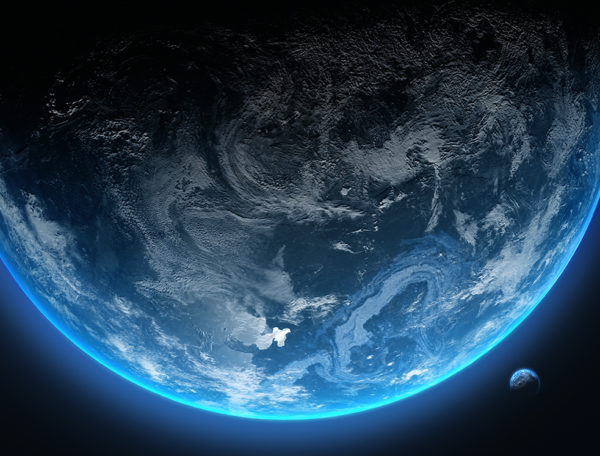
If we could take time-lapse photography of our local piece of the cosmos, after the last great supernova from the sun that preceded our own, we’d see a lot of floating rock and dust, and eventually some of that rock and dust would have pulled together through gravitational attraction and become this molten ball of hot, flaming rock which is our Earth. That’s all there is in the beginning. There’s molten rock, it begins to cool and suddenly rock becomes not only air and fire and water and earth and plants and so on, but Beethoven and Sri Aurobindo and beautiful children playing and art. All of the things that we consider to be of the highest value, suddenly, mysteriously, pop out of molten rock. Now tell me that’s an accident! When you look at the relationship between the fundamental cosmological forces like the rate of expansion of the universe, and the density of matter, and the ratio of regular matter to dark matter and dark energy and so on, we see that these ratios are so finely tuned that if they had been ever so slightly different than what they are, just unimaginably small differences, there would have been no life. Not only would there have been no life, but matter would not have organized in such a way to even have light.
Once you see how finely tuned and calibrated the cosmos is at the most basic physical level in terms of the fundamental forces like gravitation and the electromagnetic force, the electroweak force, and the strong nuclear binding force, these are so finely tuned as to suggest that the cosmos, as Brian Swimme[i] puts it, was rushing towards life. Once you see life appear in the cosmos and you know something about how finely tuned the physical forces are, you see that life is somehow intended by the cosmos, that it’s woven in, folded in, involved, that life is already involved in matter, in the cosmos as its subtler, deeper intention. So, after the big bang you would see seemingly inanimate matter suddenly coming alive, presumably everywhere in the cosmos. In this infinitely vast cosmos there is no reason to believe that there isn’t life sprinkled, peppered throughout it, and where there’s life, of course there’s mind or consciousness.
Life is the first awakening of matter to itself, and if matter is rushing toward life, then life seems to be rushing toward something else, which we could call consciousness, and at its most actualized level, wisdom, compassion, love, insight, bliss, there are different ways of describing it.
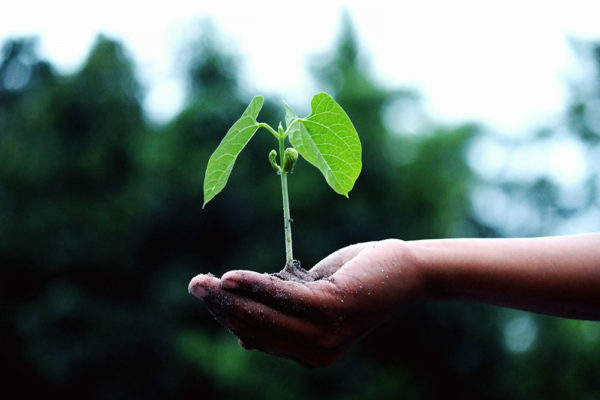
The first flowering of consciousness seems to involve the awakening of the cosmos to the sheer fact of its own beingness, and we see this in language, in the creation of images, in stories, and myths. So it’s as though, through consciousness and culture and symbols, the cosmos starts to awaken to itself, that it is, and is able to, in a sense, sing its own song, sing the song of its own being through myth and poetry and ritual and so on. But it would seem that there is something more that consciousness is aiming at than a mere representational or even aesthetic reflection of the cosmos.
Why have we arisen, why has the cosmos taken the form that it has, what is the purpose of it all? One of the answers to this seems to be that there is a great delight or satisfaction, some people would even say bliss, that is possible once matter or life has actualized itself to the point where it can radiate its fullest potential. Now, what is that fullest potential? If you’re a Buddhist you’d say it’s the potential to act out of selflessness and through compassion by seeing the other as yourself, and similarly for the Abrahamic traditions, except there it’s more spoken of in terms of love and forgiveness. Or in Hinduism, and Sri Aurobindo, there is this idea of an underlying bliss, of a sheer delight, of a kind of uncontainable and otherwise indescribable delight that is the deeper suchness of being, which is always there, but won’t become fully manifest and conscious of itself until life or embodied being, which is us, is able to organize itself in such a way that it overcomes what was necessary in the beginning.
What’s necessary in the beginning is a certain degree of selfishness and short-sightedness. If individual organisms, and then individual families and individual groups don’t look out for themselves, then they die. So you can see that life proceeds necessarily in the early phases according to a certain selfishness, but life now, and human life at its head, has organized itself throughout the whole planet to such a point where it’s in danger of extinguishing itself, so it needs to transcend this first directive, this prime imperative of biological life, and develop beyond the selfishness of mere biological being.
There is a clearer and clearer sense that we’re all engaged in an unparalleled transformation and mutation of consciousness that centers around the planet as a whole.
There is a clearer and clearer sense that we’re all engaged in an unparalleled transformation and mutation of consciousness that centers around the planet as a whole. Just imagine this, the whole of human evolution, not only our own species, homo-sapiens, but all of the Hominids stretching back maybe a million, two million years, all of that has happened within a vast geological period called the Cenozoic that’s lasted 65 million years. That period began at the end of the previous period which was brought to an end by the catastrophic impact of a meteor, which wiped out the dinosaurs and much of life on the planet. So within the last 65 million years all the mammals as we know them evolved, and toward the end of that humans emerged, very recently actually. This 65-million-year period is coming to an end in our own time. What we’re doing on the planet is bringing a geological age to a close. The only thing that has done that in the past has been the impact from a meteor big enough to wipe out the dinosaurs, or perhaps the eruption of massive volcanoes in the early period of the earth, which also stimulated mass extinctions.
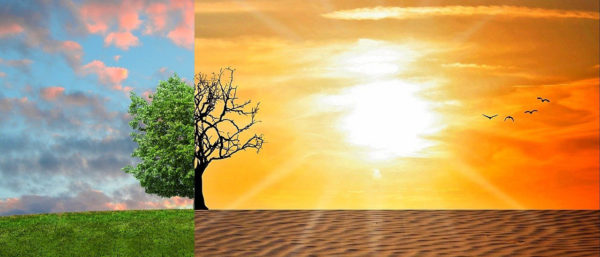
So, we’re bringing this period to a close, and it’s closing because the global climate, which had been more or less stable for the last 10 thousand years, is changing, it’s warming at alarming rates. According to James Lovelock, the inventor of the Gaia hypothesis, now Gaia theory, it may already be too late. Hopefully he’s wrong, but if he is right the warming of the earth will take at least one hundred thousand years to recover. So that gives you a sense of the magnitude of the shift that’s going on at a planetary scale. It’s not just human beings and their cities, it’s all of life on the planet.
About four-fifths of the world’s original forests are gone, about 80 per cent of commercial fish stocks are gone. Half the world gets most of its protein from seafood so just imagine that, 80 per cent of seafood stocks are gone. We saw this initially with the collapse of the Atlantic cod off the east coast of Canada a couple of decades back, but it’s happening with all kinds of species and the massive industrial trawlers are having to spread their nets deeper and deeper to bring up rarer and rarer specimens so that we can have fishcakes and so on.
We know now that the dire predictions of the Intergovernmental Panel on Climate Change (IPCC) were much too optimistic. The polar ice caps are melting fast, sea levels are already rising, the global mean temperature is rising. The number of parts per million of carbon dioxide in the atmosphere, which that panel had fixed at 350 parts per million, is already at 400 parts per million. So, we’ve already passed what the world’s consensus of experts had agreed was a level that we cannot surpass if we want to keep the global temperature within this sort of Goldilocks zone that it has been in for the last 200 thousand years so that life, as we know it, could not only evolve, but sustain itself. Add to that a world population that’s already past 8 billion, and with the mode of life that particularly we in the West, but now increasingly China and India are wanting, quite understandably, to emulate, and we are already using the equivalent of 1.5 Earths per year in terms of the capacity of Earth to sustain itself. So, these are some of the indicators.
We know that human beings had spread out of Africa about 70 thousand years ago, and as of about 20 thousand years ago there were human beings on every continent on the planet. But for those thousands and thousands of years human beings didn’t really know that there were human beings on other continents. It was only starting about 500 years ago when marine technology and navigation skills allowed colonial Europeans to “discover” the “New” World, that we started to get a continuous exchange of goods and of peoples, and an awareness that there are human beings and different cultures on all of the continents.
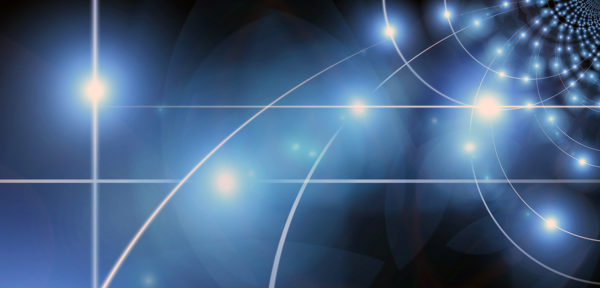
By the 20th century, we have not only the telegraph and wireless technology, but in our own time, fairly recently, the internet, where suddenly we have what Teilhard de Chardin has described as a thinking envelope, or a mental envelope, that he called the noosphere. Along with the biosphere, now there’s the noosphere, a subtler thinking envelope that surrounds Earth with information circulating around at the speed of light, and increasing numbers of people are participating in that. So there is an amplified continuous fabric of consciousness held by human beings that we are participating in. Now this is happening at exactly the same time that the biosphere, upon which the noosphere rests, is being threatened with mass extinction, habitat loss, global warming, and so on.
The thinking envelope includes everything that we would call culture and values and, as we know, what dominates culture and our values right now is money and power and baser psychological urges like greed, avarice, fear, and so on. It’s at a pretty primitive level if you think in terms of Maslow’s hierarchy of needs.[ii] So, insofar as that’s the case, the biosphere is being threatened by the thinking envelope, and the values that continue to proliferate and be reinforced are those that are eating up the last remaining resources on the planet. At the same time, as more and more people become conscious of their organic participation in this living earth, they are awakening to higher values, to subtler dimensions of consciousness that are not motivated by fear and greed, but by a sense of communal participation and of wonder at the mystery of being alive.
Why is it all happening? Is there a goal, is there a telos, or directionality, a purpose to it all? I think at the very least it seems that the planet as a whole is trying to become conscious of itself as a planet. We can think of Gaia, which is the name that many people are calling the planet, as in some sense like a person that is awakening to itself and we humans are the vehicle for that awakening. We’re also the vehicle for the potential collapse of the biosphere, which would be a great tragedy for Gaia.
The planet may have only wanted to awaken to itself as a planet, but I believe that there is more than that. I think that is a kind of minimal version of what the planet is trying to do, simply to awaken to itself as a planet, which it is doing now. I believe that what the planet is wanting to do is to maximize the conditions for life where there can be increasing magnitudes and higher qualities of truth and goodness and beauty as the natural, spontaneous expression of life’s deepest potential.
If the goal of Earth is to awaken to itself as a self-conscious being, motivated by higher urges and desires and aspirations, then it might be the case that the only way that that could happen was for Earth to simultaneously be brought to the precipice of its own catastrophe. We see this pattern in initiation rites. It is quite common for a transformation of consciousness to require a kind of near-death experience, which is what we as a planet are on the verge of experiencing.
We’re being forced to undergo a kind of mutation of consciousness, bringing us out of our narrower personal, ethnic, egoic identity to a wider sense of participation with the totality of the earth community.
Now that we are being brought to the point of potential collective death, to the collapse of civilization, the collapse of the biosphere, we’re being forced to undergo a kind of mutation of consciousness, bringing us out of our narrower personal, ethnic, egoic identity to a wider sense of participation with the totality of the earth community, with life as a whole, perhaps even beyond. We’re being invited to think in the long term for our survival and also in the longer-term in terms of a deeper emotional, spiritual meaning. It seems that this would not have happened unless we had been brought to our knees, as it were. We have to remember that the crises that we are experiencing and that we are causing are paradoxically at the same time the very means through which we are awakening. Personally, I can’t imagine that it could have happened any differently. Human beings, like other mammals, did not evolve to think in the long term. We’re not prepared as biological beings, as mammals, to think in the long term. If we look at the history of the human project that has brought us to this looming catastrophe, we can see that most of it is the result of not being able to think in the long term, or even in the middle term.
What we’re really being called to do at this point is to respond with urgency and all of the wisdom and courage that we can muster to halt the unravelling of life on the planet, to stop the situation of planetary apartheid that is condemning billions of people to poverty and suffering. This is what we’re being called to do.
What is required for a successful and sustainable earth community? We would need to widen our identity to include all beings on the planet.
So, what is required for a successful and sustainable earth community and planetary consciousness? Well, we would need to think in the long term, we would need to widen our identity to include all beings on the planet, which requires a cultivation of compassion and wisdom. So it seems as though evolution, at a biological and planetary scale, has brought us to the point where, if evolution is to succeed, we need somehow to embody the traditional core spiritual values of wisdom and compassion, or insight and love. This is where the spiritual and the biological start to intersect in the grand evolutionary project of our moment.
What will be required is for us to let it into our hearts and bodies that, despite appearances, we are essentially one body, not only on Earth, but of Earth. We share the same flesh, the same breath, the same destiny with every living being on the planet. Our fellow human beings of course, but all of the animals and the plants, we’re all woven out of one life, one fabric of life, which is being threatened with its own unravelling right now, so we’re being called to awaken to that shared body, that shared life. We know now that we have a shared origin in the primal flaring forth. We know that we all come mysteriously out of molten rock. We know that we have a common destiny and it’s our challenge right now to celebrate that common origin and destiny and to act as one to save what we can, to allow for whatever deeper mysterious potentials still remain to unfold so that the mystery of who we are can, perhaps, find expression.
As we awaken to our potential as vehicles of a higher consciousness, for a deeper consciousness, we awaken to our true selves.
When I say that we are the vehicles for that awakening, that to me already implies a kind of openness. To the extent that we awaken to that, that we are vehicles for this awakening, then we’re transformed in the process, we’re no longer who we thought we were. As we awaken to our potential as vehicles of a higher consciousness, for a deeper consciousness, we awaken to our true selves, whatever that might be. The only thing I can imagine that is more than being the vehicle for the Divine to awaken and experience itself fully in existence would be that we are That itself, that we are in fact That Being, that infinite being and consciousness and bliss, as Sri Aurobindo would say, for instance.
I know that there are some people who believe that the dolphins and other cetaceans are as aware and conscious as we are, and some people believe that all animals and beings are carriers of a certain consciousness. However, the fact remains that, apart from bacteria, you have to wait until you have humans before you have a species that actually starts to change things like the atmosphere and influence whole geological ages. So, we have bacteria at the beginning, and humans at the end.
One thing we can say about humans now is that we are the instigators and privileged carriers of planetary consciousness. Well, “so what?” some might say. What is it about a planetary consciousness that is special or unique? A planetary consciousness is very different than a personally-centered egoic consciousness, it’s different than even a consciousness that is focused on one’s own family, or one’s local community, or one’s ethnicity, or one’s nation, or even one’s federation. It is the largest possible circle that we can imagine while still being embodied beings.
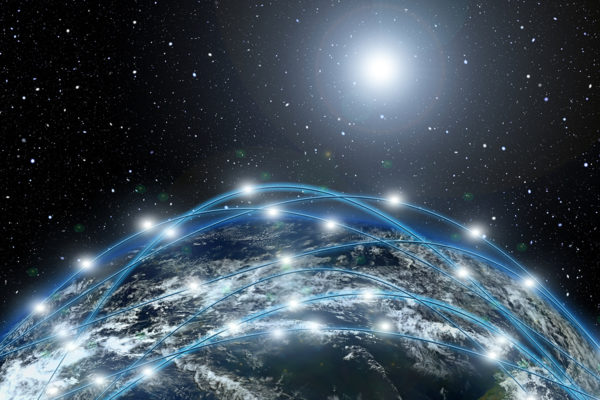
It’s conceivable that with the fact that the world has seen the emergence of true love, true beauty, true compassion, full awakening in some individuals and in some communities that it’s enough, that the goal has already been reached in that sense. But it’s also conceivable that the goal is for more and more communities, larger and wider communities to achieve that in some sort of stable fashion, and it might be that that’s what’s wanting to happen. I imagine that the deeper goal is to achieve and stabilize the widest-possible circles of awakening in love, compassion, and radical insight. That seems to be the deeper goal. That gives us a clue to what evolution might have in mind in that it is pushing individual consciousness toward a sense of identification with the widest possible circle of participation.
It is a fascinating irony of our times that, just as we are awakening to the unparalleled planetary crisis of our beautiful, fragile, unique planet, we are discovering that our galaxy is chock-full of Earth-like planets, that the universe, which contains billions of galaxies, is in all likelihood full of billions of Earth-like planets. So in that sense, we’re not alone, but of course, we are alone on this planet. This is the planet that matters to us. We’re left with this situation where, as we’re awakening to our, in a sense, cosmic citizenship, we’re also faced with the challenge of saving this planet, this one planet that we belong to. We have the opportunity now to participate creatively in cosmic evolution, but here on Earth is the only place that we can experience it.
To the extent that we widen our circles of identity to include all beings on the planet, that is how we are going to be fulfilling our higher evolutionary potential. We are being presented with choices where we need to vote, as it were, put our will, our affirmation behind something, and if we pick the shorter term, we’re picking the road to catastrophe. If we want to sustain and maximize the diversity of life and of culture, we need to make choices for the long term. Obviously, there are some short-term choices that need to be made, but we need to start thinking in the long term.
At each one of these phase shifts or mutation points, there’s something unavoidably unpredictable.
I have a guarded optimism because on the one hand the signs are very, very grave, and by some estimates not only discouraging but even hopeless. So many tipping points seem to have been passed that it’s hard to imagine how we can get ourselves out of this fix. At the same time there are two things to remember, one is the unbelievable innovation and creativity popping up all over the planet in terms of sustainable technologies, in terms of communications, the sheer enthusiasm and innovation coming from the youth in particular. That’s one thing that gives grounds for hope and counters the pessimism.
Also, there is the ineradicable uncertainty of complex situations. This is true of the whole history of life on the planet. If you go back to every single moment where there has been a mutation of life on the planet as a whole, when life first emerged let’s say, or when the first flowers emerged, or when mammals took off after the dinosaurs, or when humans emerged from mammals, or when agriculture was invented, at each one of these phase shifts or mutation points, there’s something unavoidably unpredictable. There’s an inescapable uncertainty in the complexity of our situation so that, although things seem so bad from one perspective, there’s really no way, knowing all that we do, that we can predict what’s going to happen even two years down the line, let alone ten, twenty, or a hundred years from now.
SEAN KELLY teaches evolution of consciousness, integral ecologies, and transpersonal and integral theory at the California Institute of Integral Studies in San Francisco.
[i] Brian Swimme is a professor at the California Institute of Integral Studies and author of The Hidden Heart of the Cosmos and The Universe is a Green Dragon. He recently hosted the 60-minute film Journey of the Universe, broadcast on PBS television stations nationwide.
[ii] Psychologist Abraham Maslow’s hierarchy of needs theory states that human actions are motivated by certain needs that progress from basic to complex, e.g. physiological needs followed by needs for safety, belonging, esteem, and self-actualization.
Subscribe to Collaboration
Collaboration explores the vision and work of Sri Aurobindo and the Mother, the theory and practice of Integral Yoga, and themes such as consciousness, emergence, and transformation. To subscribe, visit https://www.collaboration.org/journal/subscribe/

